Working in the seafood business so long, my friends like to ask me, The Seafood Lady, what kind of salmon should I buy? What is best? Well, the answer has a lot of variables. Wild salmon is only available fresh from mid-May until around late October, depending on the supply and species.
There are 5 species of wild pacific salmon. (Now if you are ever in Alaska, at the hatchery in Juneau, you can impress the guide knowing this bit of information!!) All the pacific salmon have two names:
- King also known as Chinook
- Red also known as Sockeye
- Silver also know as Coho
- Chum also known as Keta
- Pink is also Humpback (or Humpies)

Other than Pink, the salmons are most familiar by their Native American names. When they are available fresh depends on the season. For instance, Sockeye season opener is normally May 15, give or take a day or two depending on the count. That season will usually last until around July maybe August. You will see Coho in the stores around June, and goes through September, or a bit longer. Keta is usually the latest season. Pink salmon is most often the salmon that is canned, but occasionally it can be found in the stores. Chinook salmon numbers are way down, so finding fresh and wild in the stores is now more difficult. Chinook recovery is a very important agenda here in the Northwest.
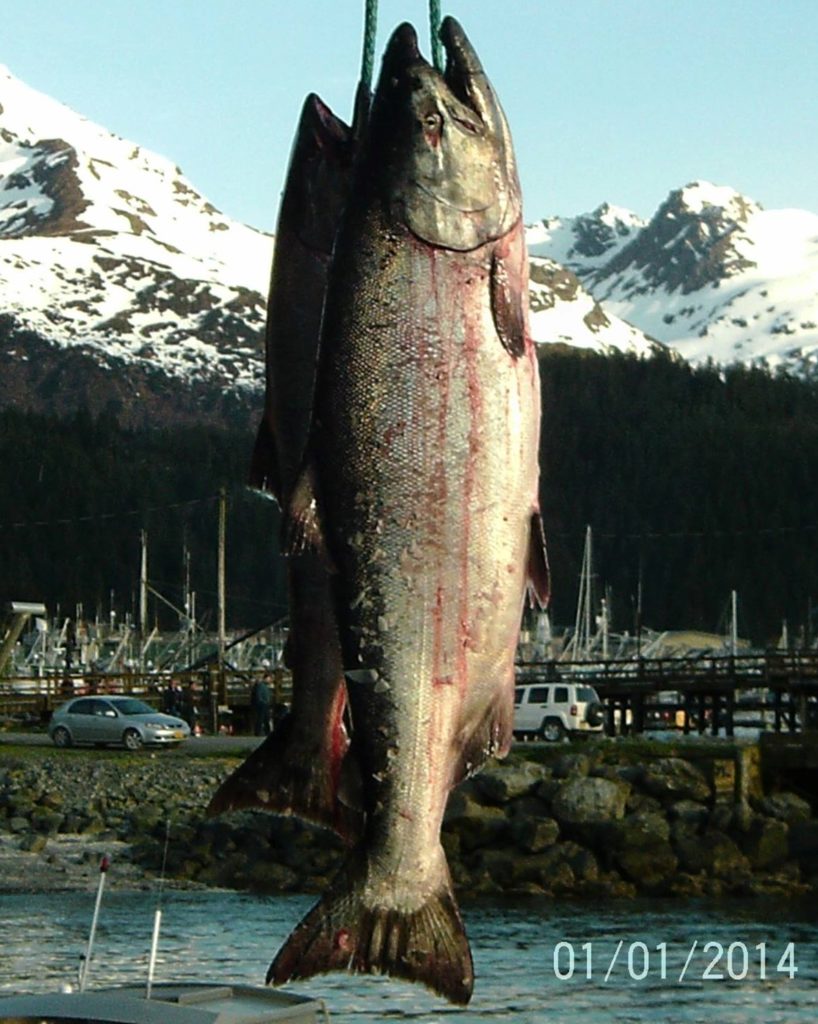
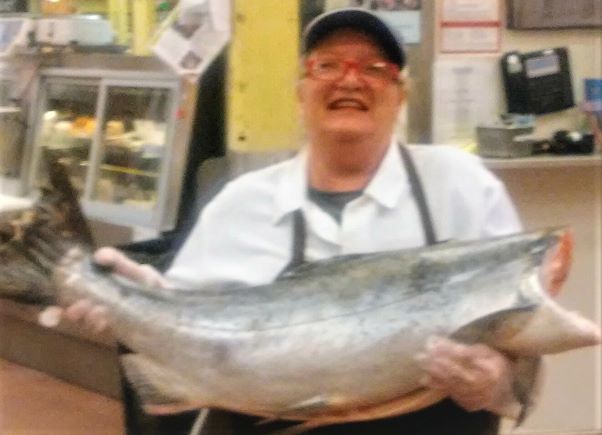
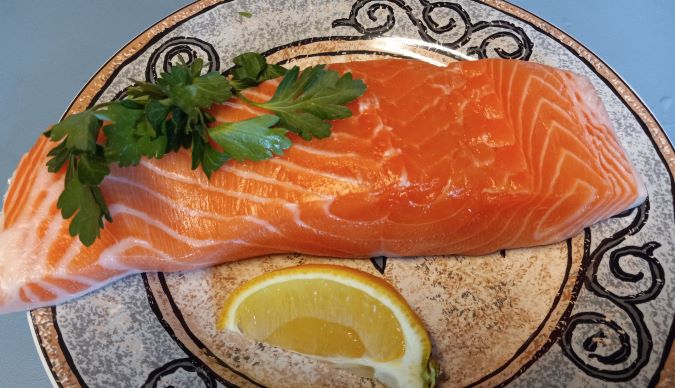
Of course, Chinook is the best, even the killer whales think so! It is the largest of the salmons, average weight 30-40lbs, (record I read was 126lbs) and the fillets are very thick. The fat content is highest in the King of salmons, healthy fats. It results in a moister salmon to cook, less likely to overcook. The price for this prized fish, though, is very high, $30-$40/lb. For that price you DO NOT want to overcook!!
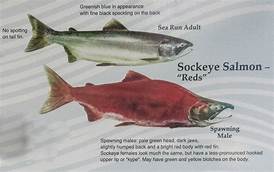
Sockeye salmon is the first to arrive on the scene. Season opens May 15, with the opening of the Copper River for commercial fishing. Sockeye salmon is one that I will only eat fresh. I don’t care for how freezing changes the taste and texture. (I eat it only once, maybe twice a year.) Also, even though the good fat content is 2nd highest of the wild salmons, there isn’t as much marbling, and the bright red fillets are thinner, smaller fish. While it can be good grilled, my preference is to poach it. (Recipe below.) The price at the beginning of the season is very high, I’ve seen it as high as $25lb + for whole fish. But as the season progresses, and more Alaska rivers open, the price stabilizes. That first of the season sockeye is a very desirable prize though.
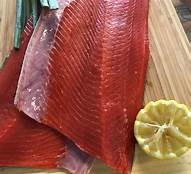
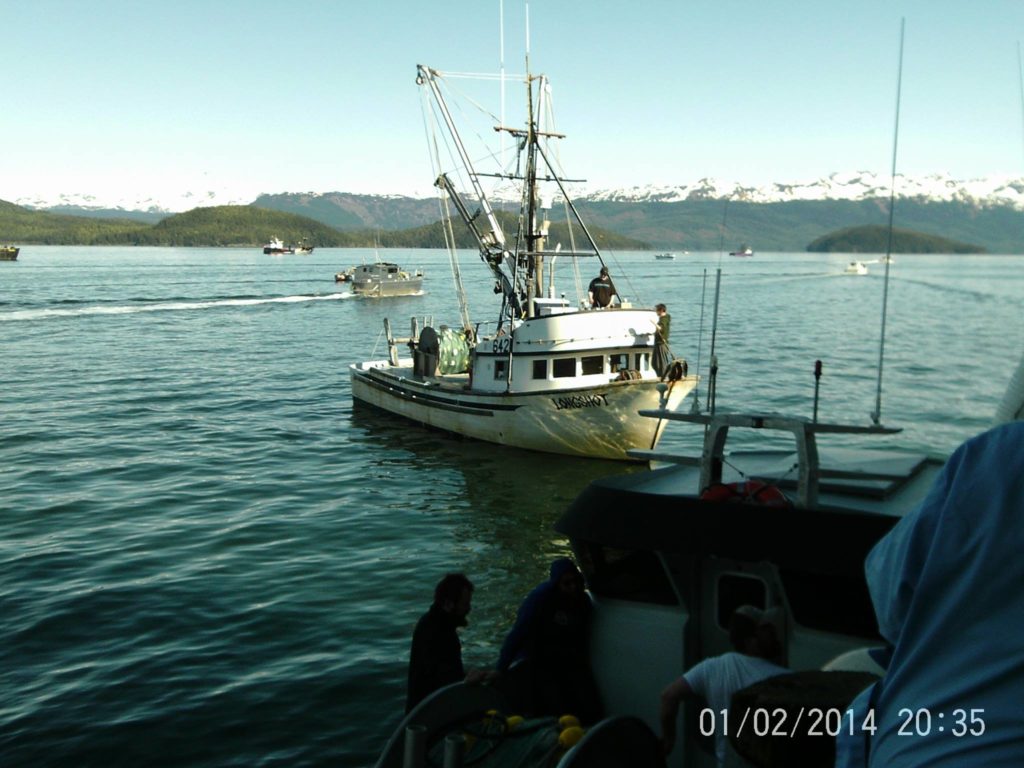
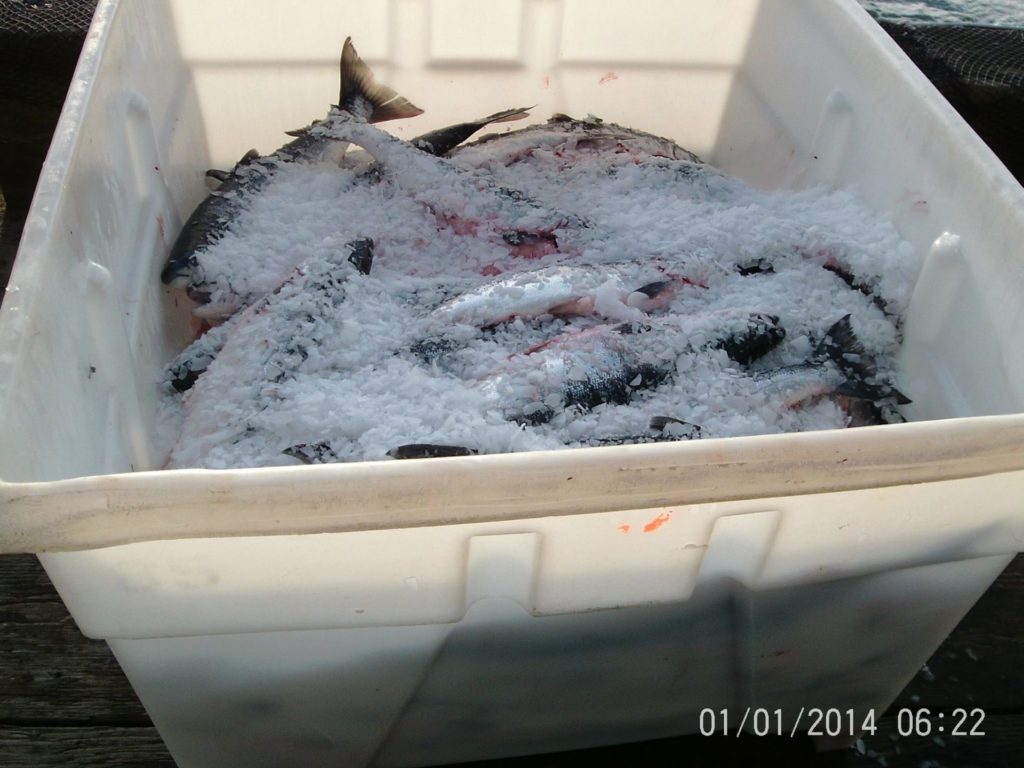
I was privileged in 2015 to be able to be in Cordova, Alaska for this celebrated opening of the Copper River fishing season. It was an experience I will never forget
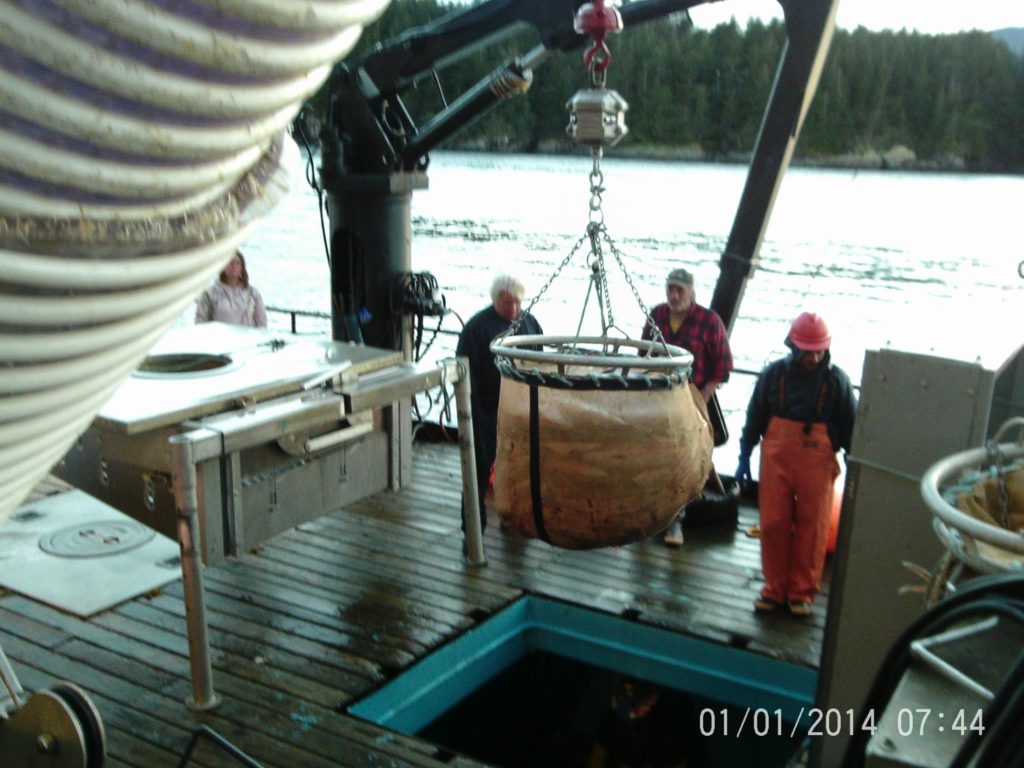
This YouTube video shows how the first of the season Copper River Salmon is celebrated in Seattle. Chefs from around the city are waiting to get some of that premium fish, at a premium price! So much fun to celebrate the opening of the Alaska Salmon season,
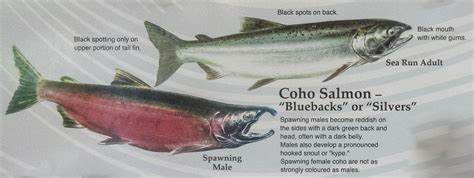
Coho is good, just not my personal favorite. It’s mild flavor is perfect for those who like a more subtle-tasting salmon. The flesh is firm enough to make it versatile in the kitchen or on the grill where it will hold up nicely. Coho are an average size ranging from 7 to 12 lbs. normally. The bigger fish produce a thicker fillet, which I prefer. The fat content is still a good source of Omega 3’s.
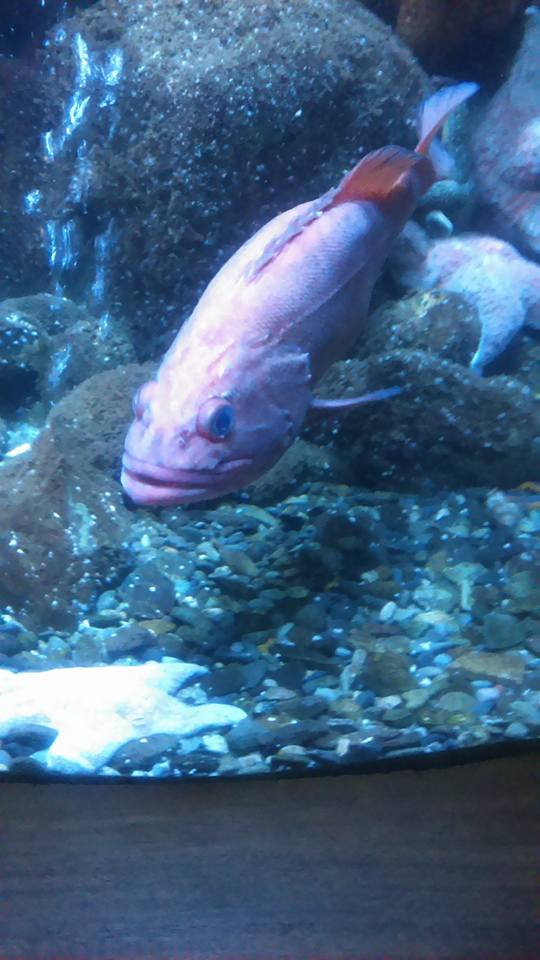
Coho salmon is native to the North Pacific Ocean. In the wild, coho thrive in the ice-cold waters of SE Alaska and off the coast of British Columbia and Washington. Although salmon farms are illegal in Alaska, they do have hatcheries. I visited one in Juneau in September 2015 and got to see the salmon returning to spawn. As I already stated, this is where I shared my knowledge of the 2 names of the 5 pacific salmon and impressed the heck out of our guide! Hey, he asked!
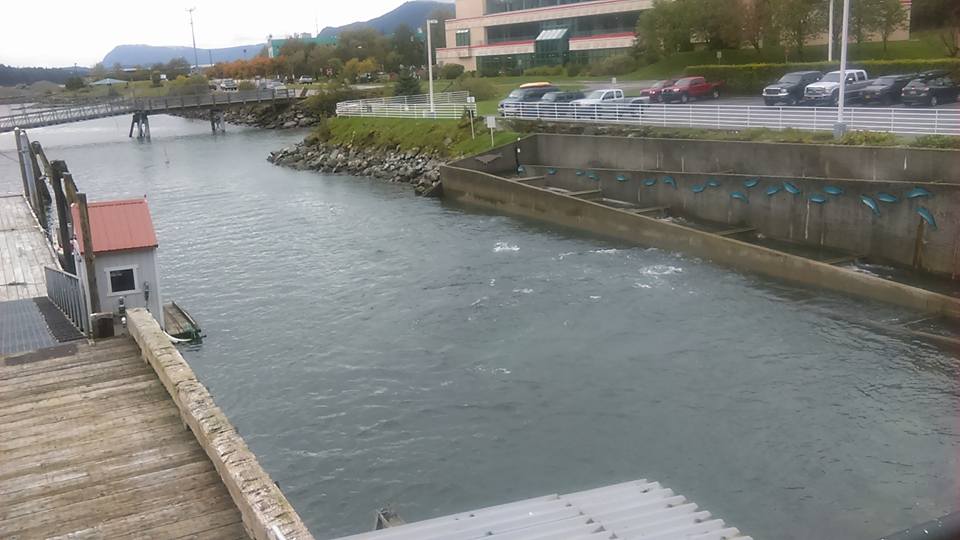

Keta salmon probably have the worst, undeserved, reputation. They were once referred to as dogfish, the salmon people of fed to their dogs. Years ago, it was difficult to sell this salmon, but it has become very popular. These fish run larger, 10 to up to 30 lbs. The flesh is usually a paler color than other salmon. The flavor is mild, though I find the texture to be softer than other salmon. If it is cooked right, it is a good salmon, and the price is usually very reasonable. The season runs later than other Salmon, usually into late October.

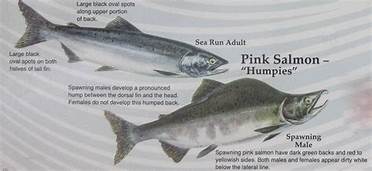
Pink salmon, also known as Humpback, are generally the salmon used for canned salmon. The fish itself is on the small size, 3.5-5 lbs. When I have sold pinks out of the seafood counter, it has been whole fish. Good fish to stuff and cook on the grill. Fillets tend to be thin and can easily overcook.
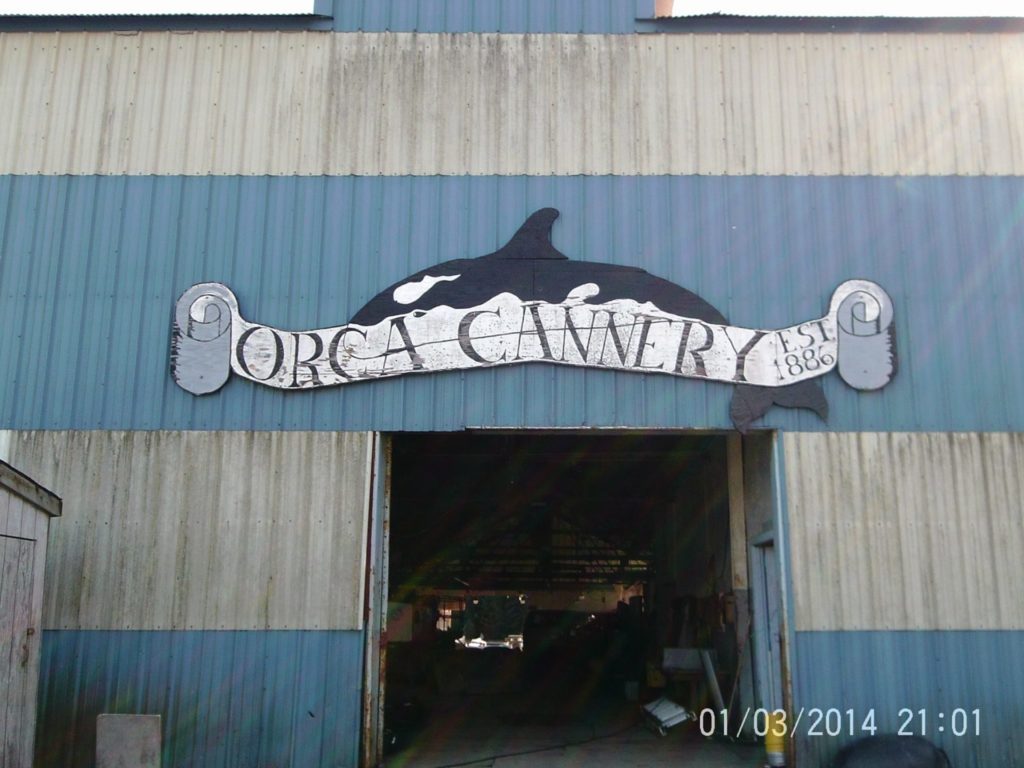
http://www.orcaadventurelodge.com/
Your personal choice of wild salmon will depend on a few things. Flavor profiles do vary between the species. Chinook and Sockeye are a richer flavor, while Coho and Keta are milder. I once recommended sockeye to a customer, told her how delicious it was, and she came back yelling at me because she thought it was disgusting! (the joys of working retail!) I say try them all and see what you like and can afford. That is another factor, price. Chinook will always be expensive, after all it is king. Sockeye will start the season off at a higher price but stabilizes in about a month or so. Coho and Keta usually are a good value.

Other factors, and the most important, are country of origin, (where it is sourced), fishing method and the ranking by the Monterey Bay Aquarium Seafood Watch program, www.seafoodwatch.org. My preference is salmon from Alaska. They have been managing their salmon fisheries since Alaska became a state. One of the primary reasons Alaska sought statehood was to assert management control of its wildlife resources. The principles of conservation and sustainable yields are embedded in Article 8 of the Constitution of State of Alaska. Also the Native Americans are a huge part of the population, and it is their culture to exercise conservation of the natural resources, so it has been managed for many thousands of generations.
Although I will share a recipe for each of the different species, the recipes are interchangeable. Just be conscious of the thickness of the salmon, and fat content, and adjust the cooking times accordingly. I love salmon, and it is heart healthy!! Looking forward to the 2022 season to begin. And a good cookbook is always handy!!
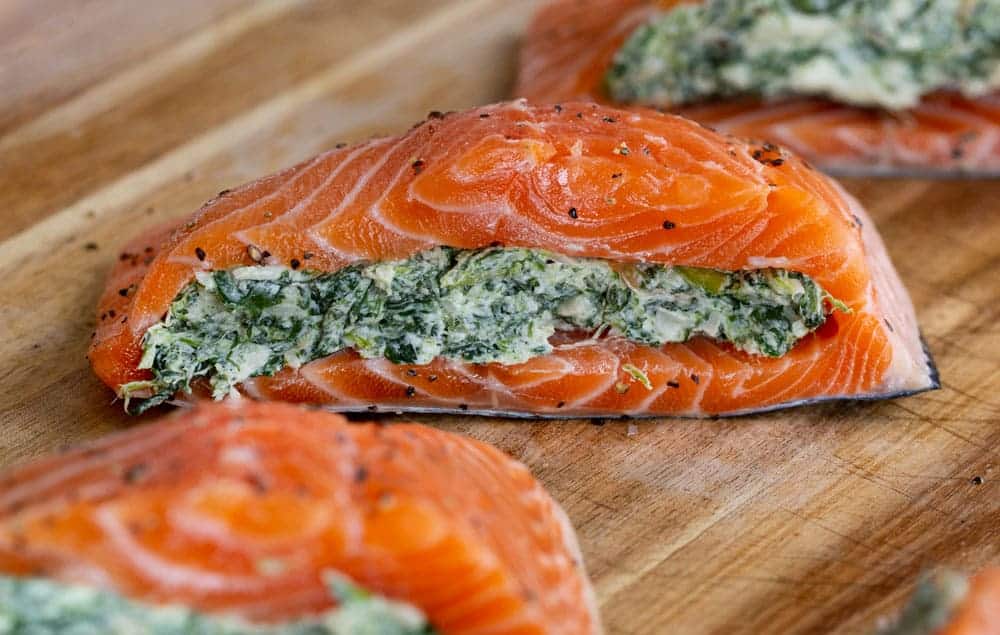
Spinach Stuffed Chinook Salmon
Because Chinook salmon fillets are thick, they are perfect for this stuffed salmon recipe. Keta would be good too. Remember to ask your fish monger to remove the pin bones for you. Easy to do when you know what you are doing.
Ingredients:
Spinach stuffing mixture:
- 4 ounces cream cheese, softened
- ½ cup shredded mozzarella
- ½ cup grated parmesan cheese
- 2 cups fresh spinach chopped
- ¼ tsp minced garlic
- ¼ tsp red pepper flakes
Salmon:
- 4 – 6 oz Salmon fillets, skin on
- 3 tbsps. olive oil
- ½ tsp dill weed
- 1 tsp. salt
- ½ tsp. ground pepper
- 2 tbsps. Butter
- ½ lemon for juice
- ½ lemon for garnish
Directions:
Spinach Mixture:
- In a large bowl, mix together all the cheeses, with the spinach, garlic and red pepper flakes. Set aside and leave at room temperature
Salmon:
Lay out salmon fillets skin side down
Drizzle each fillet with olive oil and sprinkle with dill weed, salt and pepper.
Use a sharp knife to cut a pocket in the side each fillet.
Spoon ¼ of the spinach mixture into each salmon fillet.
Place salmon in an oiled baking dish, skin side down.
In a saucepan, with medium heat, melt butter with lemon juice. When melted pour over the top of the fillets.
Bake at 375 for 25 minutes. Internal temp should be 145 degrees.
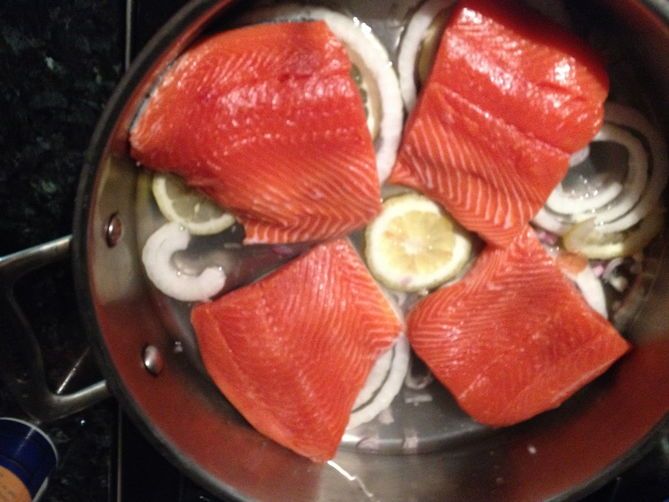
Poached Sockeye Salmon Fillet with Sauté vegetables:
My personal favorite!
Ingredients:
- 1 lb. of Sockeye salmon fillet
- ½ tsp ground cumin
- Salt and pepper to taste
- 2 tbsp. butter or olive oil
- 1 tsp minced garlic
- ½ cup asparagus cut into 1-inch pieces
- ½ cup zucchini, sliced
- ½ cup onion, sliced
- 1 red bell pepper, sliced into strips
- ½ cup sliced mushrooms
- 1 cup white wine, (your choice) or chicken broth
- ½ cup shredded parmesan cheese
Season the salmon fillet with cumin, salt, and pepper.
Melt butter or heat olive oil in skillet, add minced garlic.
Add asparagus, zucchini, onions and bell pepper, sauté until they begin to soften. Then add mushrooms.
Add wine/chicken broth and bring to a simmer, reduce heat to medium low.
Lay seasoned salmon fillet in skillet on top of vegetables, skin side down.
Cover skillet, then after 7 minutes turn off heat.
Sprinkle Parmesan cheese of top of fillet and cover again. Let sit in pan another 5 minutes.
Carefully remove salmon from on top of vegetables. Cutting the fillet in half may help with presentation.
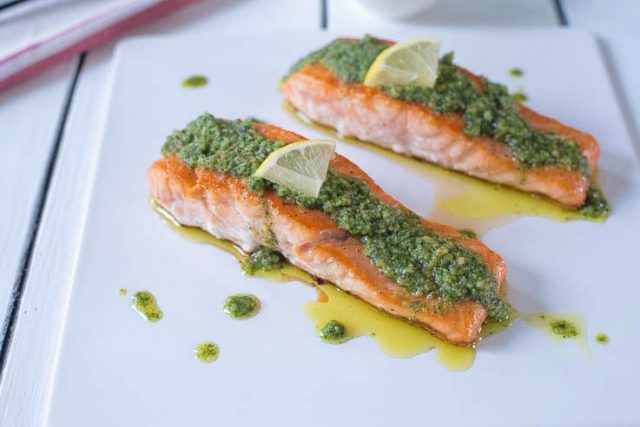
Coho Salmon Pesto
This recipe is from my BFF Debbie Javalosa! She highly recommended it, and I have had it in restaurant before it is a perfect combination and simple!!
Ingredients:
- 4 6 oz fillets of Coho fillet, pin bones removed
- Lemon for juice
- ½ tsp olive oil
- Salt and pepper to taste
- 8 tsp of pesto sauce
- Lemon wedges for serving/garnish
- Parsley for garnish
Preheat oven 375 – 400 degrees. In a small baking dish add olive oil, then place fillets skin side down. Season with salt and pepper. Spread 2 tsp pesto sauce over the top of each fillet. Bake in oven about 20 minutes, temperature at 145 degrees, fish will flake. Garnish with fresh parsley and serve with lemon wedges.
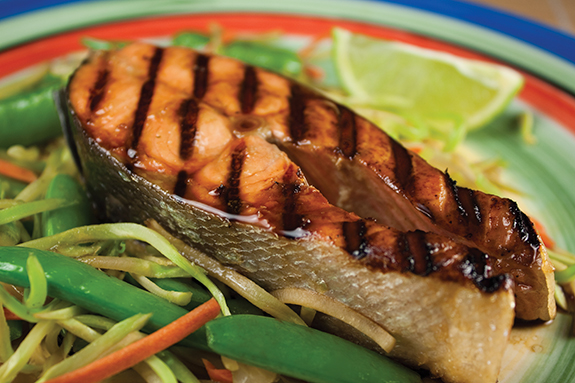
Grilled Maple Keta Salmon Steaks
- 4 1 – 1 ½ inch Keta salmon steaks
- Olive Oil cooking spray
- ½ cup maple syrup
- Salt and pepper to taste
- 2 tsp. sweet paprika
- 1 tsp. chili powder
- ½ tsp ground cumin
- 1 teaspoon brown sugar
Mix maple syrup, salt, pepper, sweet paprika, chili powder, cumin, and brown sugar together in a bowl.
Lay the salmon steaks on a cookie sheet, pour ½ mixture over steaks, turn and pour rest over the steaks.
Let the steaks marinate for one hour.
Spray grill with cooking spray.
Place steaks on preheated grill, med heat. Cook 5 minutes then turn over. Cook another 7 to 8 minutes.
Carefully remove steaks from grill with a spatula.

Stuffed Whole Pink Salmon
- One whole pink salmon approx. 3 lbs. Head and tail removed.
- 1 tsp. olive oil
Stuffing:
- 6 oz cream cheese softened
- 2 tbs butter
- 1 small onion finely chopped
- ½ cup celery, finely chopped
- ¼ cup finely chopped green pepper
- 1-pound uncooked shrimp, peeled, deveined and chopped
- ¼ cup beef broth
- 1 teaspoon Worcestershire sauce
- ½ tsp dill weed
- Salt and pepper to taste
- 1/8 tsp. cayenne pepper
- 2 cups panko breadcrumbs
- Cooking twine
In a large skillet, melt butter. Add onion, celery, and green pepper, sauté until tender.
Add shrimp; cook and stir until shrimp turn pink. Add broth, Worcestershire sauce, dill, , salt, pepper and cayenne.
Heat through. Remove from heat; stir in cream cheese and breadcrumbs.
Rub belly of salmon with olive oil.
Put stuffing inside the belly of the Salmon.
Tie twine around the Salmon in 4 or 5 places.
Wrap whole fish in foil.
Place on med high grill, for 30 minutes, turning once.
To serve remove stuffing from fish.
Now the tricky part. Hold on to spine of fish and gently pull it down the fish. Most of the bones should come out and the meat is ready to serve with the stuffing on the side.

Please let me know if you tried and enjoyed any of these recipes or share some of your own!! Bon appetite!


Very interesting article. Did not know there were that many different types of salmon. Recipes look awesome. You will have to fix me a stuffed one!
Thanks for this blog, Teri. I am a huge fan for fresh wild caught salmon, it is so delicious. And I really appreciate the info provided and the recipes. I can’t wait to try some of them.
Not a Salmon eater but find this very interesting article.
Glad you enjoyed!
Welcome to the Northwest!!
Loved all the pictures. Pictures going along with the articles really enhances what you are saying! All the salmon recipes look delicious and I would love to try that stuffed spinach salmon. Great writing Teri!
Im excited to discover this site. I need to to thank you for your time for this fantastic read!! I definitely liked every little bit of it and I have you book-marked to check out new things on your website.
Excellent article. I certainly appreciate this website. Stick with it!
Itís nearly impossible to find well-informed people for this subject, however, you seem like you know what youíre talking about! Thanks